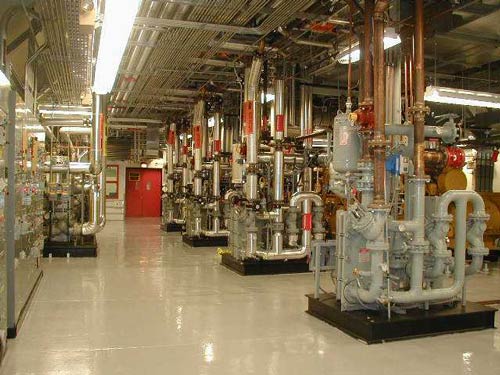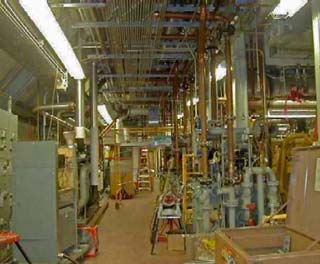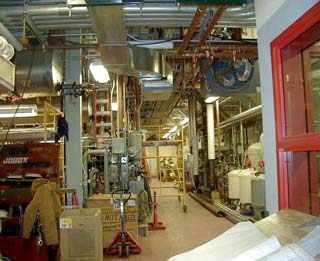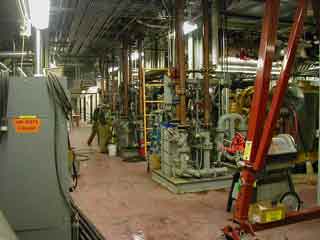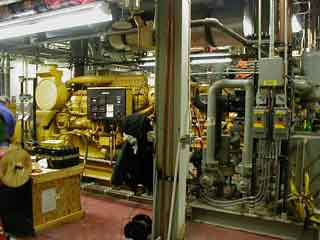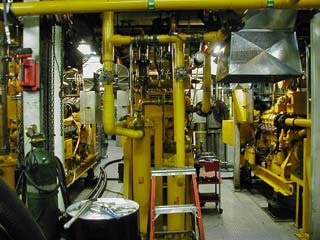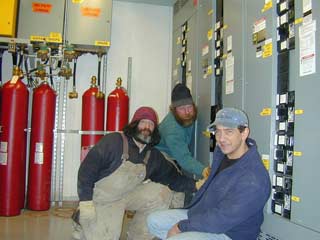2000-01 Photos - New Power Plant Completion
|
While work on the elevated station was just beginning, one major effort of the season was the completion of the new power plant. For the past several years, summer power demand required extensive power conservation efforts and frequent load sharing with the summer camp power plant. Now (at least for a few years) there would be a bit of power to spare. The above photo of the completed plant (by Andy Martinez, 9/02) looks upwind; the control room is behind the window in the left background. The skids in the foreground are the heat recovery skids which run the hot engine glycol through heat exchangers to heat the station (the incomplete one in the foreground is for the future "peaking" generator #4 which would not be installed until 2004-05). First, a couple of early summer (I think) photos from Carlton Walker: | |
|
Here are three construction photos from Scott Smith: | |
|
There are three Caterpillar 3512 engines (okay, 3512B DITA, which means direct injection, turbocharged and aftercooled) with a nameplate rating of 1015 KW prime power at sea level (or 750 KW here at altitude)...the fourth engine, installed in 2004-05, is a 3406C-320 site rated at 239 KW. This is the "peaker." The switchgear automatically controls the starting of the generators, synchronization, and closing of the breakers--no more watching the synchroscope and lights (although they are still available, and can and have been used when necessary. The peaking generator will start up and go on line automatically when the load reaches a certain set point, and similarly it will be shut down if the electrical demand drops off. Commissioned at the end of the 2004-05 summer, the peaker has already seen a fair amount of use. But despite earlier concerns, the power demand seems to have gone down a bit in recent years, what with the removal of the dome, smaller population, and minimal use of summer camp. | |
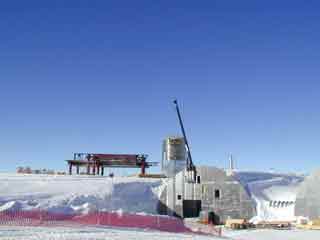 The end of the power plant arch early in the season...the new station is rising in the background (photo by Paulene Roberts, NOAA). |
|
| There was also some prep work to be done in the old power plant...waste heat glycol piping was installed from the new plant so that the dome buildings could be heated from it. These two photos are from Scott Smith. | |
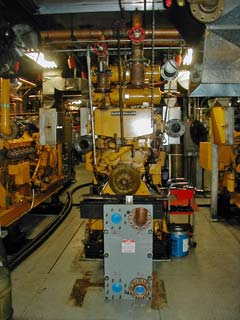 Those exchangers were replaced with this one, to use glycol heat from the new power plant. Engine #2 was taken offline for good. |
|
| Here are 2 photos (from the station sitrep) taken on 20 January 2001, the day the "switch was thrown": | |
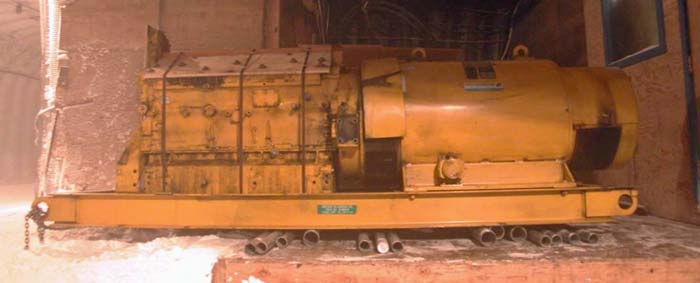 At some point generator #2 from the old power plant was stripped down and packed up for retrograde...here it is sitting on the loading dock during the winter. This is another sitrep photo, probably all 3 of these should be credited to winter site manager Jerry Macala. While all this was happening, the new MARISAT/GOES antenna was being erected downwind of the station... | |
